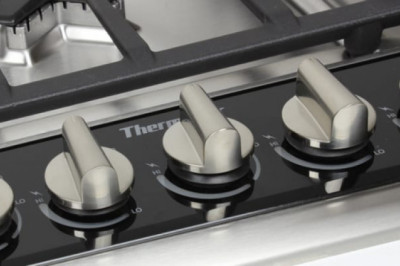views

Wood Coatings Biocide Market size is forecast to reach $1.3 billion by 2026, after growing at a CAGR of 5.5% during 2021-2026. Biocides are the products or chemicals that combat pests or micro-organisms. Wood Coatings Biocide is widely used in the protection of wood or wood-made structures and also helps in increasing product life. The increasing demand for tebuconazole and propiconazole based products to control fungicides control wood-destroying due to their adaptability and abundance across indoor and outdoor applications of residential, commercial, and industrial sectors and boost the market growth. Additionally, Zinc Pyrithione (ZNP) powder is also used to protect stains and emulsion paints from fungal and algal.
Furthermore, the increase in demand for wood in home décor and roofing across the developing regions also drive the market growth. Furthermore, high investment in the tourism, healthcare, and education sectors has encouraged the growth of the construction industry in Saudi Arabia, which is subsequently driving the demand for the wood coating biocide market. The COVID-19 pandemic continues to unfold every day with a severe impact on people, communities, and businesses. The pandemic has reduced the demand for Wood Coatings Biocide. The growth of construction industry and the sales of furniture unit has decreased, these two are the primary users of the biocide coatings and has severely impacted the market's growth.
Wood Coatings Biocide Market Segment Analysis - By Ingredient Type
Iodopropynyl Butylcarbamate (IPBC) segment held the largest share of more than 30% in the wood coatings biocide market in 2020. IPBC is a water-soluble preservative used in the paints & coatings, wood preservatives, personal care, and cosmetics industries. It is widely used as a biocide for wood coating. IPBC helps in preserving hardwoods and softwoods from fungal attacks. Iodopropynyl Butylcarbamate is highly effective as compared to propiconazole against fungicide, mold, mildew, and bactericide.
IPBC is relatively low toxic for mammals and degrades rapidly in soil and aquatic environments, which is why it is not classified under EPA RUP. The advantage of IPBC treatment is that it is colorless and allows the wood to maintain its natural appearance, unlike propiconazole, which is yellow in color. Furthermore, it's highly cost-effective has better performance, easily available, and its ability to maintain its effect for a long period will drive the market's growth in the forecasted period.
Request for Sample Report @ https://www.industryarc.com/pdfdownload.php?id=18610
Report Price: $ 4500 (Single User License)
Wood Coatings Biocide Market Segment Analysis - By Formulation
Solvent-Borne segment is projected to witness a significant CAGR of 3.5% in the Wood Coatings Biocide Market during the forecast period. The low cost, quick-drying ability and microporous protection against wood rot, fungi, mold, and insect attack properties make solvent-borne coatings as useful products across various wood applications. Solvent-Borne Coatings are less sensitive to environmental conditions such as temperature change and humidity, which is why they are widely used for wood preservation as wood is temperature coefficient.
Solvent-borne wood coating product to control fungicides Solvent-borne are used as a protective coating on wood or wood products, as it does not allow any moisture to seep into the wood and protect it from decay or rot. Solvent based wood coating biocides also provides excellent protection against ultraviolet radiation and waterproofs any cracks up to 0.4mm, which is why they are used on external wood structures like decks, railroad ties, fences, garden furniture, and wooden shed, which will further drive the markets growth.
Wood Coatings Biocide Market Segment Analysis - By Applicant Process
Brushing segment held the largest share of more than 30% in the Wood Coatings Biocide Market in 2020. Brushing is the simplest form of protective treatment and is widely used in the coating process, as they are cheap and don’t require any expensive equipment, like spray treatment. When applying a protective layer to a furniture brush coating is more feasible, as the painter has better control over the tool, and the protective coating is equally applied. Brush coating offers various benefits such as better control, very good adhesion, equal & uniform coverage than spraying coating, which makes brushing coating suitable for the various wooden application.
Moreover, not only the brush itself has a low-cost alternative but the application also consumes less coating material, thus saving more coating in the long run. Furthermore, in renovation work brush coating is preferred over spray treatment, mostly in confined spaces, as spraying emits fumes and requires a well ventilated/open area, especially when dealing with biocide coatings. According to research done by Checka trade, a trade directory, estimated around $71.3 billion to be spent on renovations in 2020 in the United Kingdom, which will further propel the market.
Wood Coatings Biocide Market Segment Analysis - By Application
Furniture segment held the largest share of more than 35% in the Wood Coatings Biocide Market in 2020. The growth of this market segment is attributed to the changing people lifestyle, increase in consumer income, growing consumer interest in home decoration, and increase in residential and commercial properties. Furthermore, increasing promotional activities for commercial & residential building accommodation with ready-to-use furniture to attract buyers and get better deals are likely to propel market growth.
According to International Trade Center (ITC) report in 2020 the global furniture markets is estimated to be $ 1.1 Trillion by 2024, which will further drive the Wood Coatings Biocide Market during the forecasted period. Whereas, propiconazole, zinc pyrithione, and tebuconazole based wood coatings products provide excellent seasonal protection from both shell and fouling, owing to this protection ability, the demand for these types of wood coating is growing from the furniture sector.
Wood Coatings Biocide Market Segment Analysis - By Geography
APAC segment held the largest share of more than 45% in the Wood Coatings Biocide Market in 2020. The increase in demand for biocide coatings from different applications encompass joinery, flooring, railroad tie, cabinet, and decks. Furthermore, an increase in commercial housing activities, growing industrial construction, and the development of historic places further drive the market growth. Furthermore, growing investments in furniture-backed living, especially of the middle-class population is expected to drive the growth of the market in the region.
According to Organization for Economic Co-operation and Development (OECD), estimated that the global middle-class population is estimated to be 3.2 billion in 2020 and will increase to 4.9 billion by 2030. The bulk of this growth will come from Asia and will represent 66% of the global middle-class population by 2030. Thus, this growth further drives the growth of the furniture and housing sector, which in turn boosts the demand for the wood coatings biocide market in the region.
Wood Coatings Biocide Market Driver
Rapid Urbanization boosting the growth of the market
With an increase in consumer income and urbanization, the demand for residential and commercial complexes has increased worldwide. Wood Coatings Biocide is used across residential, commercial, and industrial sectors. The commercial applications include fencing, railroad products, public infrastructure, and decking. Wood products are an underrated necessity in the housing needs of humans as they serve in every nook and corner of the house. Beds, chairs, floors, tables, cupboards, flooring, and many other products of a house utilize wood and require finishing require protective wood coating.
According to the United Nation, 55% of the world population lives in urban areas and is projected to be 68% by 2050, such a huge population moving in urban areas will significantly boost the demand for the construction industry. For instance, a report released by Oxford Economics the global construction is expected to reach $15.5 trillion by 2030 China, the US, and India leading the way and accounting for 57% of all global growth, which in return boosts the demand for the Wood Coatings Biocide market.
Surging Demand from the furniture Industry
The furniture industry is largely dependent on wood coatings biocide to protect its product from fungal infestation and preserve the furniture for a longer period. Moreover, these wood coatings also protect the furniture from degradation while in storage and also provide a glossy finish to the wood. These factors help in increasing the demand for the wood coatings biocide market.
According to The Association of Furniture Manufacturer of India (AFMI), the Indian furniture industry is expected to be $61.09 billion by 2023 and growing at a CAGR of 13.38% during the forecasted period. The demand for furniture is growing both in urban and rural India, adding to the growth of the furniture sector. Furthermore, the growth of online shopping platforms, like pepperfry and urban ladder also contribute to the market growth. These factors will further boost the demand for the furniture industry, and in return boost the wood coating biocide market.
Download Sample Report @ https://www.industryarc.com/pdfdownload.php?id=18610
Wood Coatings Biocide Market Challenges
Emission of Volatile Organic Compounds (VOCs)
Growing concerns for environmental protection among the organization, governments, and the general public is hindering the market's growth. The use of volatile organic compounds (VOC) in the production of biocide wood coating like benzene, ether, and toluene, is hampering the growth of the market. For instance, in the U.S., the Environmental Protection Agency (EPA) has set federal laws for VOC emissions and some states have also tightened emission norms even further, making an impact on the market growth of solvent-borne coatings. The U.S. EPA regulates VOCs at the Federal level in 40 CFR 59, which is the National Volatile Organic Compound Emission Standards for Consumer and Commercial Products.
Market Landscape
Technology launches, acquisitions and R&D activities are key strategies adopted by players in the Wood Coatings Biocide Market report. Major players in the Wood Coatings Biocide Market are Lonza Group AG, Akzo Nobel N.V., PPG Industries, Inc., BASF Wolman GmbH, Lanxess AG, Troy Corp., Wacker Chemie AG, Clariant AG, Reactive Surfaces Ltd, Organics GmbH, and among others.
Acquisitions/Technology Launches
In February 2020, LANXESS AG announced the acquisition of Itibanyl Produtos Especiais Ltda. (IPEL) is a leading biocide manufacturer in Brazil. This acquisition will strengthen Lanxess position as the leading manufacturer of antimicrobial active ingredients and formulations also with its market expansion across Brazil.
Key Takeaways
North America is projected to grow at a substantial rate over the forecast period due to the growing construction industry across the region. Whereas, the US holds the largest share in the region.
Wood Coatings Biocide can have toxic carcinogen, which can cause cancer and environmental degradation and will likely hinder the market growth.
COVID 19 has reduced the demand of the market due to the shutdown of many industrial operations and construction activities.
Related Reports :
A. Biocides Market
https://www.industryarc.com/Report/11647/biocides-market.html
B. Metal Biocides Market
https://www.industryarc.com/Research/Metal-Biocides-Market-Research-500275
For more Chemicals and Materials Market reports, please click here












